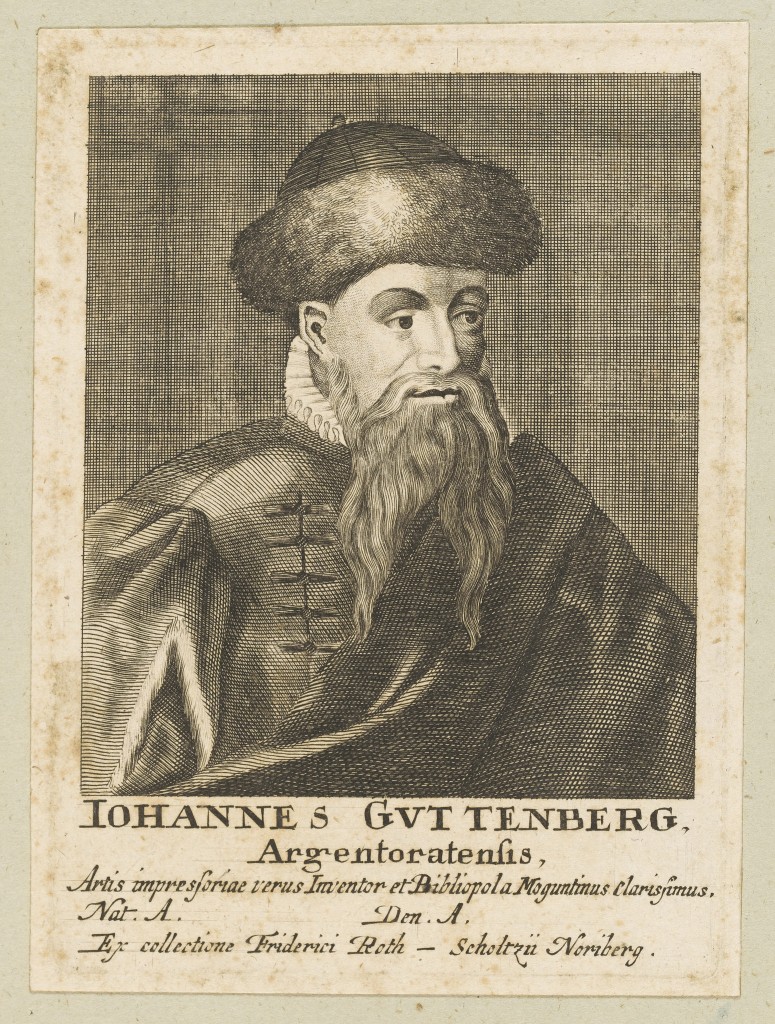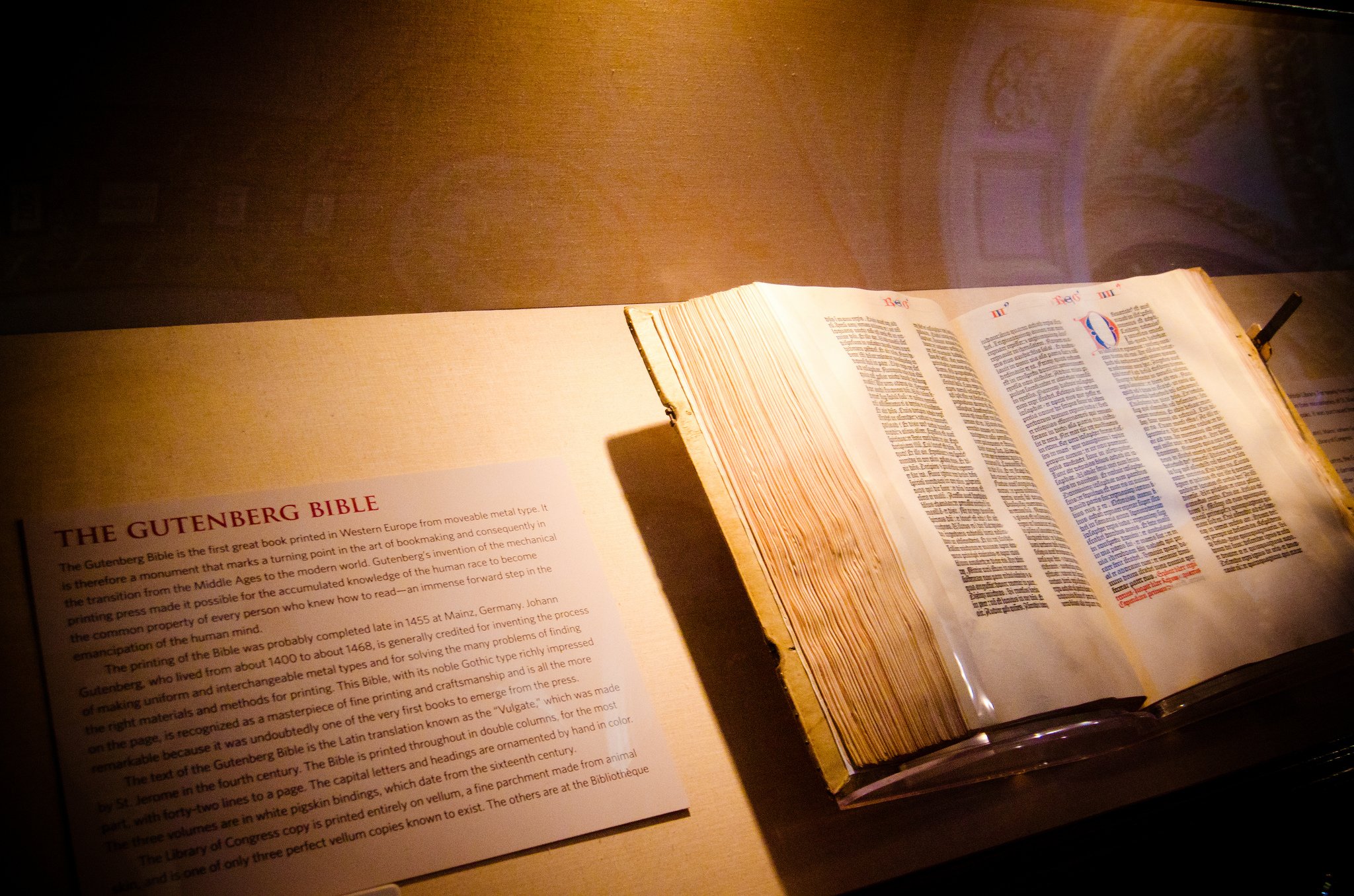Who Invented Mass Printing?

Last Updated on February 2, 2016 by Christian Ralph
Printing has become such a massive part of everyday life for millions of people around the world, that it can be hard to conceive a world without the technology. However before the 15th century, printing was an unknown quantity – until the printing revolution entered full swing. Regarded as one of the most important events of the modern period, the Printing Revolution played a key role in the Renaissance, Reformation, the Age of Enlightenment and the Scientific Revolution.
And we owe most of this to the man who brought movable type printing into Europe – Johannes Gutenberg. Born in Germany, 1398, Gutenberg was a man of many talents, working as a blacksmith, goldsmith, printer and publisher, before kickstarting a revolution in Europe.
Legend suggests that the idea for movable type came to Gutenberg like a ray of light, and he used it immediately to satisfy demands from investors who had funded his misadventure in creating metal mirrors designed to capture holy light from religious relics. Rumour also has it he let investors in on the secret of movable press when they chased him for money owed.
By 1440, Gutenberg is believed to have perfected his printing process and unveiled it in a presentation, cryptically named Kunst und Aventur (art and enterprise). A decade later, Gutenberg’s printing press was in full swing, knocking out copies of German poetry. This was largely funded by a wealthy local moneylender, Johann Fust, who also recommended his son-in-law, Peter Schöffer to the operation. Having worked as a scribe in Paris, it is believed that Schöffer designed some of the early typefaces for the printing press.
Soon after this, the printing operation began creating a range of different texts including the famous Gutenberg Bible – the first major mass-produced book.
Unfortunately, Gutenberg was accused by Fust of misusing the funds and the former’s debt started to spiral out of control. Fust now assumed control over the lucrative bible printing workshop, and ownership of half of all printed bibles. Gutenberg was declared effectively bankrupt, but opened a small printing shop in the town of Bamberg.
However, his contribution to printing was recognised during the latter stages of his life. Just three years before his death in 1468, Gutenberg was given the title Hofmann (gentleman of the court) by Archbishop Adolph von Nassau.
Fittingly, his legacy continues to live on, in 1504 he was recognised as the inventor of typography by Professor Ivo Wittig. And then in 1567, his likeness was depicted in Heinrich Pantaleon’s biography of famous Germans – although it is possible this image was entirely fabricated.
There are a number of statues dedicated to Gutenberg in Germany, and even a University named in his honour, the Johannes Gutenberg University of Mainz. The A&E Network ranked Gutenberg as the most influential person of the second millennium, and Time-Life magazine recognised his invention as the most important of the same time period.
And his influence even goes beyond this planet, with the asteroid 777 Gutemberga, named after him.
All of the printers in the Printerland range are descendants of Gutenberg’s original printing principles – using the time-tested and trusted methods with a few centuries of technological updates and upgrades. To check through the full range, visit the Printerland homepage or call our dedicated team on 0800 840 1992 today.
Images sourced via Flickr Creative Commons. Credit: Universitätsbibliothek Leipzig F, Stephen Luke


